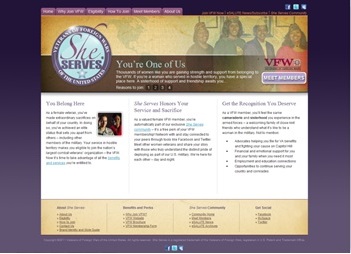A marketing campaign is a lot like the friendship bracelets I tried to make as a child. First however, let’s bypass the fact that if these bracelets had actually dictated my number of successful friendships, I would have been flying solo.

In your campaign, there are many individual threads that take the form of your advertising options and opportunities. One of your threads leads in the direction of a direct mail, an advertisement or any other offline marketing campaign. Another one takes you online to your websites, blogs and social media. Still more threads provide the means for analyzing, tracking and measuring your progress and results. With all of these threads moving in different directions, your marketing campaign efforts may begin to look like my own tangled friendship bracelets. Only this time your mother won’t smile and applaud your effort; instead, you’re likely to face dismal campaign results.
But there is a way to change that rainbow-colored snarl into a neatly plaited campaign. By gathering your errant threads in one hand, and combining the strengths of those various channels, you will create a stronger, more robust marketing plan. Multichannel marketing campaigns allow marketers to extend the reach and impact of their advertisement efforts. For instance, in a direct mail piece you can include a web address or, even better, a landing page which will provide the consumer with more information and encourage more interaction with your business. This, in turn, makes tracking response rates easier and measurable. From here you can send them to a social networking site or a blog dedicated to your product and/or company.
Multichannel Campaigns in Action – The Veterans of Foreign Wars
In 2008 Johnson Direct began working with the Veterans of Foreign Wars on a campaign to increase female membership. The main roadblock was that this distinguished organization was largely viewed as a “men’s club.” Women were either unaware they were able to join, or had the impression that they would not be accepted by male members.
To bypass these barriers, JD launched the She Serves brand. She Serves lets female vets know they have a special, defined place as a VFW member. She Serves effectively separated itself from the long-standing, stereotypical image of the older male brand.
A dedicated She Serves website–or microsite–was developed to serve as the hub of all marketing activity. Microsites are direct-response driven mechanisms; they drive recruitment and gather information about prospects, providing qualified leads for future recruitment and marketing efforts.
 The She Serves microsite is designed to resonate with the female audience. It enables visitors to apply for membership online, join a Facebook group, meet members or sign up to receive email updates. Content on the She Serves site is specifically tailored to address the needs and issues women veterans face. Direct mail has been used to drive non-members to the site to learn more about their eligibility and how to join.
The She Serves microsite is designed to resonate with the female audience. It enables visitors to apply for membership online, join a Facebook group, meet members or sign up to receive email updates. Content on the She Serves site is specifically tailored to address the needs and issues women veterans face. Direct mail has been used to drive non-members to the site to learn more about their eligibility and how to join.
This multichannel, integrated campaign has achieved extraordinary results.
As of March 2011 the number of female members rose an incredible 880% from the same time just one year prior.
At Johnson Direct we don’t relax our marketing efforts, even when things are humming along. Based on this campaign’s history, we learned direct mail and Facebook are serious traffic drivers to our She Serves recruiting site. We’re continually testing our direct mail efforts and, following a direct mail campaign that dropped March 1. By April 15 female membership increased 193%.
The upward trend of this marketing campaign demonstrates the prowess of a well-planned, well-executed multichannel marketing approach.
Detangle your campaign. Your bottom line will thank you.